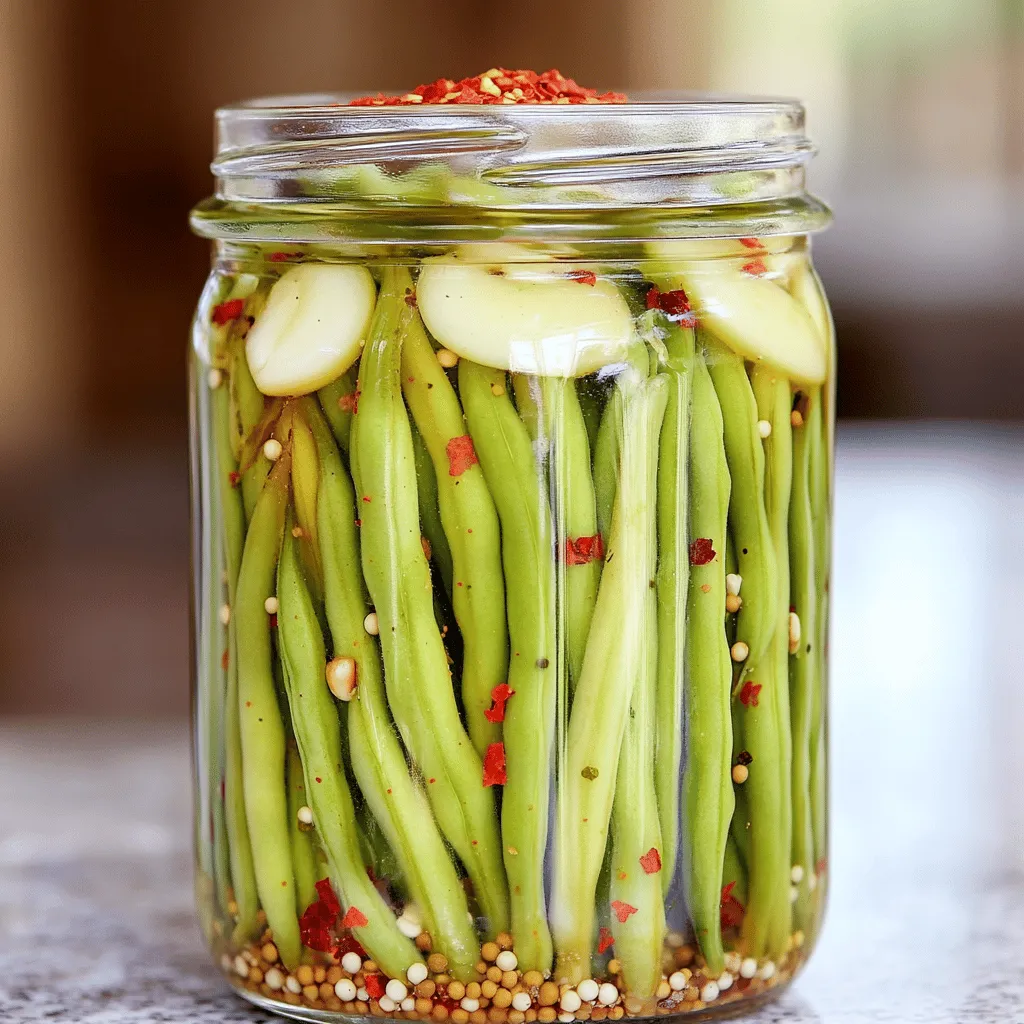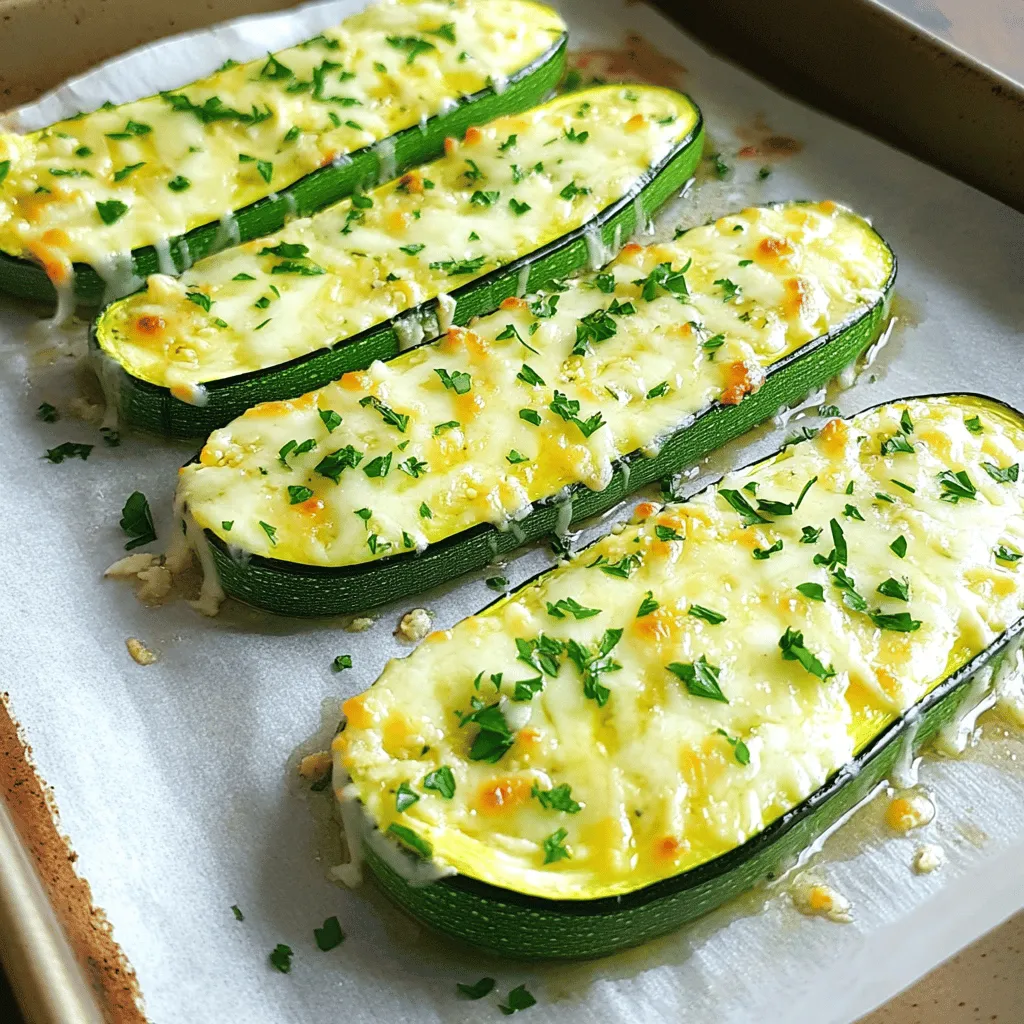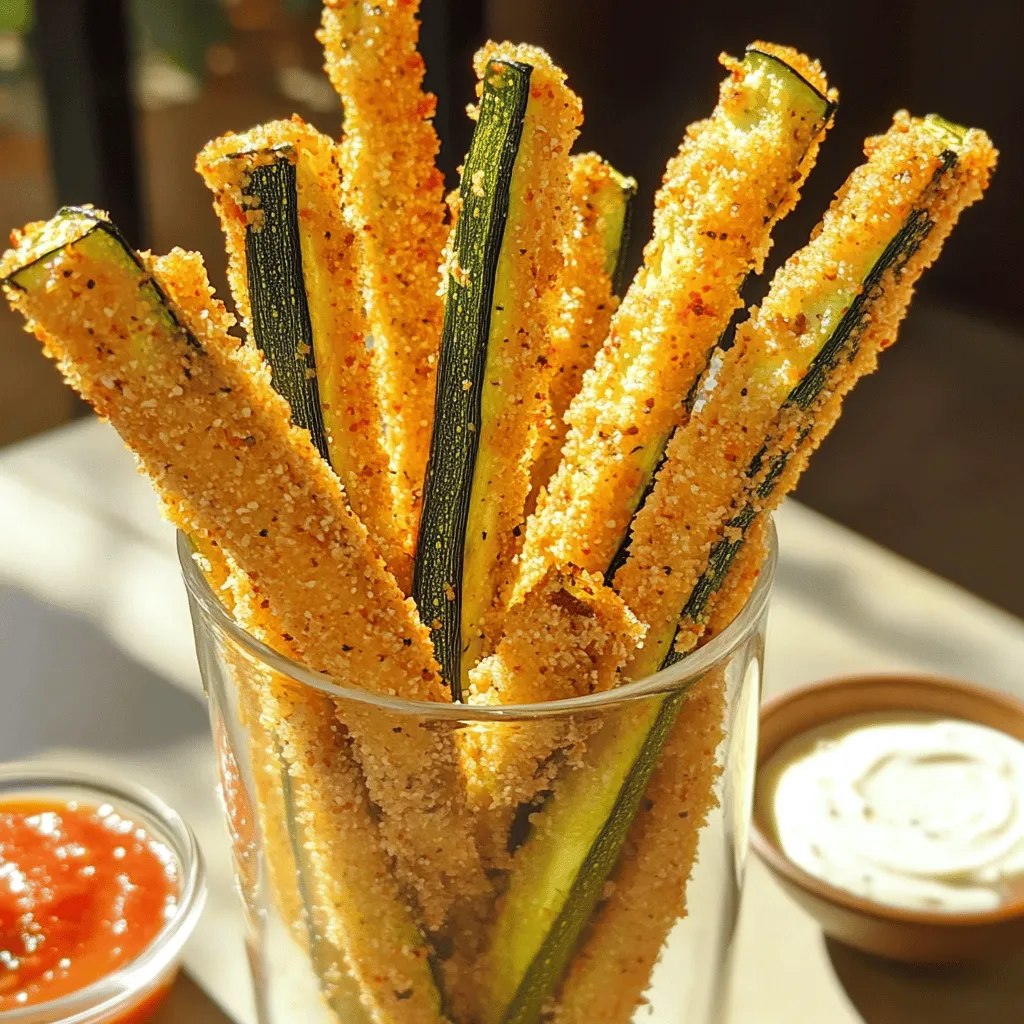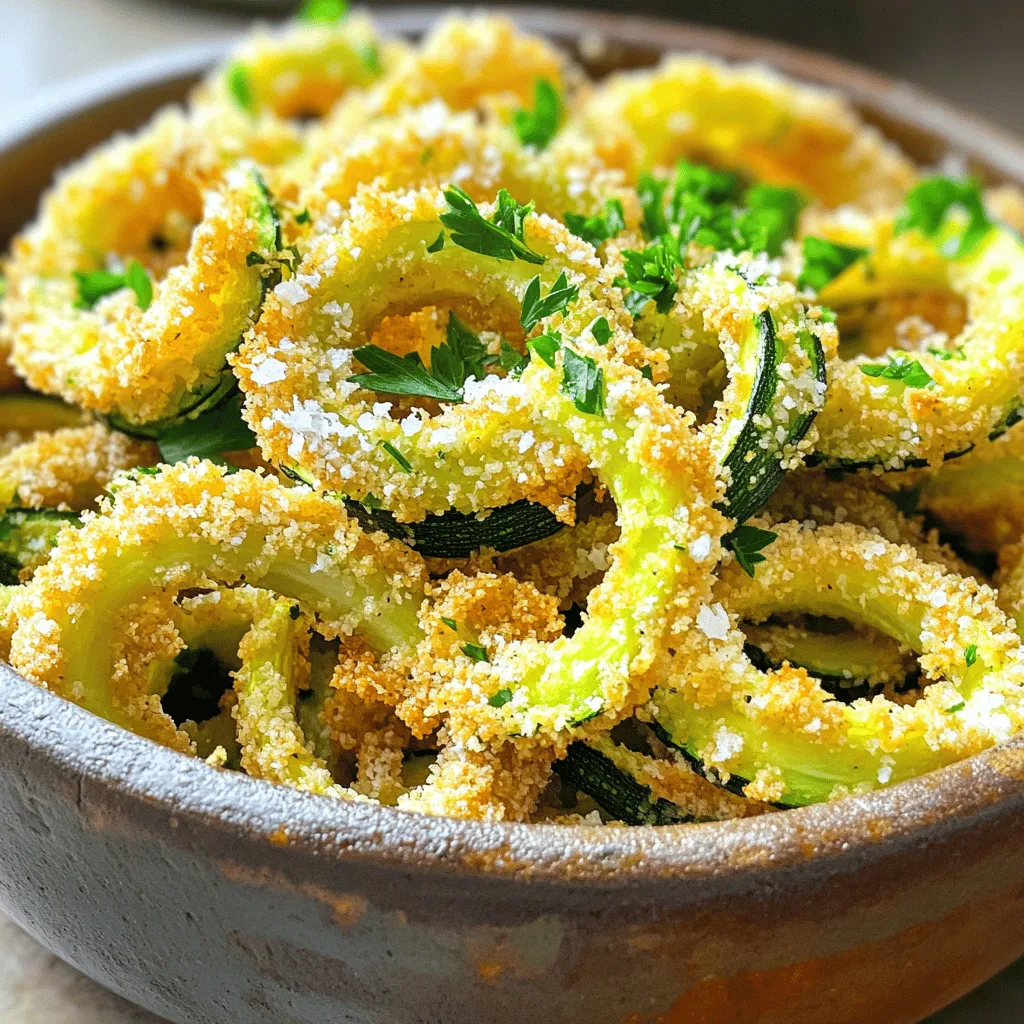Appetizers
. In this post, we covered how to make delicious pickled asparagus. I shared the key ingredients, from fresh asparagus to spices, and provided step-by-step instructions. You learned tips for crunch and flavor, along with variations for your taste. Remember to store your pickles correctly to enjoy them longer. Making and enjoying pickled asparagus can be simple and fun. With a little practice, you’ll have tasty snacks ready at home. Happy pickling!](https://roastedflavors.com/wp-content/uploads/2025/07/a9261fd7-c9c5-4f0b-ab94-1f6b0e0c74d6.webp)
Pickled Refrigerator Asparagus Crunchy and Flavorful Treat
Are you ready to add a crunchy, flavorful twist to your meals? Pickled refrigerator asparagus is the perfect snack or side dish! With just a

Quick Pickled Green Beans Tangy and Simple Recipe
Are you ready to add a zing to your meals? Quick pickled green beans are tangy, crunchy, and super easy to make! With just a
![To make grilled zucchini with balsamic glaze, you need fresh ingredients. Here’s what you will need: - 3 medium zucchinis, sliced into ½ inch thick rounds - 3 tablespoons extra virgin olive oil - Sea salt and freshly cracked black pepper, to taste - ½ teaspoon garlic powder - ½ teaspoon Italian seasoning blend - ½ cup balsamic glaze (can be store-bought or homemade) - Fresh basil leaves, for garnish These ingredients come together to create a tasty dish that shines on any table. The zucchinis offer a satisfying crunch, while the balsamic glaze adds a sweet tang. The olive oil helps the flavors mix, making each bite delicious. The salt and pepper bring out the natural taste of the zucchini. Garlic powder and Italian seasoning give a warm, comforting flavor. Fresh basil not only looks great but smells wonderful too! For the full experience, check the [Full Recipe]. It guides you step-by-step to create this flavorful treat. Preheat your grill to medium-high heat. This step is key for great results. A hot grill helps the zucchini cook evenly and get those nice grill marks. Take three medium zucchinis and slice them into ½ inch thick rounds. In a big bowl, combine these slices with three tablespoons of extra virgin olive oil. Make sure every slice gets a good coat of oil. Next, add sea salt, freshly cracked black pepper, half a teaspoon of garlic powder, and half a teaspoon of Italian seasoning blend. Toss everything together gently until the zucchini is well coated. This mix brings out the best flavors in your grilled zucchini. Now, it’s time to grill! Place the seasoned zucchini slices on the hot grill. Grill them for about 4-5 minutes on one side. Look for nice grill marks and a tender texture. During the last minute of grilling, drizzle half a cup of balsamic glaze over the zucchini. This glaze caramelizes and adds a sweet touch. Once done, carefully take the grilled zucchini off the grill and put them on a serving platter. You can arrange them in an attractive way. Finally, add fresh basil leaves for a pop of color and aroma. For the full recipe, you can check the earlier section. Enjoy your grilled zucchini with balsamic glaze! To grill zucchini well, heat your grill to medium-high. Aim for a temperature of about 400°F. This heat ensures even cooking and nice grill marks. Grill the zucchini for 4-5 minutes on one side. Flip them once you see the grill marks and they feel tender. To achieve perfect grill marks, place the zucchini at a 45-degree angle. After a few minutes, turn them 90 degrees to create a crosshatch pattern. This technique adds flair to your dish and enhances the visual appeal. For extra flavor, try adding herbs or spices. A sprinkle of smoked paprika or chili flakes can bring a kick. Fresh herbs like thyme or oregano also work great. You can even swap out the balsamic glaze. Try a lemon vinaigrette or a garlic-infused olive oil for a fresh twist. These options can elevate your grilled zucchini experience. Mix and match to create your own flavor profile. For the full recipe, refer to the earlier section. Enjoy cooking! {{image_4}} You can cook grilled zucchini in different ways. If you don't have a grill, use your oven. Preheat the oven to 400°F. Place the zucchini on a baking sheet, drizzle with olive oil, and season. Bake for about 20 minutes until tender. You can also use a stovetop grill pan. Heat the pan over medium heat. Add the zucchini slices and cook for about 4-5 minutes on each side. You can mix it up by adding other veggies. Try bell peppers, asparagus, or eggplant. Each vegetable brings its own taste. You can create a colorful veggie medley. Grilled zucchini pairs well with many dishes. It makes a great side for grilled chicken or steak. Serve it alongside a fresh salad for a light meal. For sauces, you can try a yogurt dip or a lemon vinaigrette. Both add a nice zing that complements the sweetness of the zucchini. You can also use marinara or pesto for more flavor. For a full recipe, check out the complete details to bring this dish to life! After enjoying your grilled zucchini, store leftovers in a safe way. First, let the zucchini cool to room temperature. Then, place it in an airtight container. This keeps the zucchini fresh and tasty. Grilled zucchini lasts about 3 to 4 days in the fridge. You can enjoy it as a side dish or in salads later. To reheat grilled zucchini, use a skillet or microwave. If you use a skillet, heat it on medium. Add the zucchini and warm it for a few minutes. This method helps keep the flavor and texture nice. If you use a microwave, heat it on medium power for about 30 seconds. Check if it’s warm enough and stir if needed. Avoid overheating to keep the zucchini from getting mushy. Yes, you can prepare grilled zucchini ahead of time. To do this, grill the zucchini as directed in the full recipe. After grilling, let them cool completely. Store the zucchini in an airtight container in the fridge. They will stay fresh for about 2-3 days. When you want to serve them, just reheat them on the grill or in a pan for a few minutes. This quick reheating brings back some of that lovely charred flavor. If you don’t have balsamic glaze, you can try other sauces. A simple mix of balsamic vinegar and honey works well. Just combine 1 part vinegar with 1 part honey and warm it slightly to blend. You can also use teriyaki sauce or a lemon vinaigrette. Each option brings a unique twist to the dish. Experiment to find what suits your taste best. To keep zucchini firm, slice it evenly. Aim for ½ inch thick rounds, as this helps them cook evenly. Make sure your grill is hot before adding the zucchini. This quick sear keeps the moisture inside. Grill for about 4-5 minutes per side. Avoid overcooking, as that leads to mushy zucchini. Following these tips helps ensure you get delicious, tender, yet firm grilled zucchini every time. Grilling zucchini is simple and tasty. You learned the right ingredients and steps for success. Zucchini's different cooking methods and flavor tips add variety. Proper storage keeps leftovers fresh, while reheating maintains taste. By exploring balsamic alternatives and seasoning options, you can customize your dish. Enjoy your grilled zucchini with various sides, making every meal delightful. Remember, cooking is fun, and experimenting will only improve your skills. Dive in and make this dish your own!](https://roastedflavors.com/wp-content/uploads/2025/07/d3eba0a6-220c-4443-a32a-15239400a04f.webp)
Grilled Zucchini with Balsamic Glaze Flavorful Treat
Looking for a vibrant side dish that bursts with flavor? My Grilled Zucchini with Balsamic Glaze is perfect for you! With simple ingredients and easy

Cheesy Garlic Zucchini Steaks Tasty and Simple Recipe
If you’re looking for a fun and tasty dish, cheesy garlic zucchini steaks are here to impress! This simple recipe brings bold flavors right to

Baked Zucchini Fries Crispy and Flavorful Snack
Looking for a snack that’s both crunchy and tasty? I’ve got the perfect solution: Baked Zucchini Fries! These fries are easy to make and full
. You’ve learned how to make cheesy garlic zucchini steaks, from ingredient choices to baking techniques. Remember to prep your zucchini well and be mindful of cooking times. Enjoy trying various cheese and veggie combos for added flavor. Store leftovers properly to keep them tasty. With these tips and tricks, you’ll avoid common mistakes and impress everyone with your dish. Embrace the fun in cooking and enjoy every bite. Happy cooking!](https://roastedflavors.com/wp-content/uploads/2025/07/32ba849c-0f9b-4da3-8feb-ca2cbfa22762.webp)
Cheesy Garlic Zucchini Steaks Flavorful and Easy Recipe
Are you ready to elevate your veggie game with a dish that’s both tasty and simple? Cheesy Garlic Zucchini Steaks deliver rich flavor and satisfying
. To get that perfect crispiness, you must start with the right oven temperature. Preheat your oven to 425°F (220°C). This high heat helps the zucchini cook quickly and brown nicely. While you roast, avoid overcrowding on the baking sheet. If the zucchini slices are too close, they will steam instead of roast. Spread them out in a single layer for the best results. Fresh herbs bring out the best flavors in your dish. I love adding basil or thyme to my roasted zucchini. You can also try optional spices like smoked paprika or cumin for a unique twist. These add depth and make the dish pop with flavor. To get an even cheese coverage, sprinkle the grated Parmesan cheese evenly over the zucchini. Make sure each slice has a nice layer of cheese. Keep an eye on the roasting time. You want the cheese to turn golden brown and crispy, which usually takes about 15-20 minutes. If it needs a bit more time, check every few minutes to avoid burning. {{image_4}} You can change the cheese in this recipe. Try using mozzarella or feta for a different taste. These cheeses melt well and add a unique flavor. You can also mix cheeses for more depth. Adding diced vegetables is a fun twist. Bell peppers, cherry tomatoes, or onions work great. These veggies cook well and add color. Just make sure they are cut small enough to roast evenly. Incorporating lemon zest brightens the dish. Just a little zest adds a fresh, zingy flavor. You can also squeeze a bit of lemon juice over the zucchini after roasting for added brightness. Trying different herbs and spices can change the whole taste. Consider using thyme, basil, or rosemary. Each herb brings its own unique character. Experiment to find your favorite combination! Pairing your roasted zucchini with side dishes is easy. Try serving it with rice, quinoa, or a fresh salad. These sides complement the flavors well and add nice contrast. You can also pair roasted zucchini with proteins. Grilled chicken, fish, or steak work beautifully. The creamy cheese and tender zucchini balance nicely with heartier meats. To check out the full recipe, click here: [Full Recipe]. To keep your Oven Roasted Parmesan Zucchini fresh, refrigerate it right away. Place leftovers in an airtight container. This helps to lock in moisture and flavor. Use a container that fits well, so the zucchini does not get squished. You can store it for up to three days in the fridge. When reheating, you want to keep the zucchini crispy. The best way is to use an oven. Preheat your oven to 350°F (175°C). Spread the zucchini on a baking sheet in a single layer. Heat for about 10 minutes. Check if it’s warm and crispy. You can also use a skillet, cooking on medium heat for 5-7 minutes. If you want to freeze your zucchini, start by letting it cool completely. Arrange the slices on a baking sheet in a single layer. Freeze them for about 2 hours. Once frozen, transfer the zucchini to a freezer bag. Squeeze out as much air as you can. It will last up to three months in the freezer. To thaw, place the zucchini in the fridge overnight. For reheating, use the oven method above for the best results. Enjoy your tasty side dish whenever you want! For the full recipe, check out the complete steps in the article. To make Oven Roasted Parmesan Zucchini, follow these steps: 1. Preheat your oven to 425°F (220°C). 2. Line a baking sheet with parchment paper. 3. Slice 4 medium zucchinis into ½ inch rounds. 4. In a bowl, mix the zucchini with 2 tablespoons of olive oil. 5. Add 1 teaspoon of garlic powder, 1 teaspoon of dried oregano, salt, and pepper. 6. Toss the zucchini to coat evenly. 7. Arrange the zucchini on the baking sheet in a single layer. 8. Sprinkle ½ cup of grated Parmesan cheese over the zucchini. 9. Roast for 15-20 minutes until tender and golden brown. 10. Garnish with 2 tablespoons of chopped fresh parsley before serving. This method gives the zucchini a crispy texture and rich cheese flavor. For the full recipe, check the details provided above. Yes, you can use yellow squash instead of zucchini. Both squash types have a similar taste and texture. - Zucchini is slightly firmer and has a mild flavor. - Yellow squash is a bit softer and has a sweeter taste. Both work well when roasted. You can mix them for a colorful dish. Oven Roasted Parmesan Zucchini pairs great with many dishes. Here are some tasty ideas: - Grilled chicken or fish for a healthy protein. - Quinoa or rice for a hearty grain side. - A fresh garden salad for added crunch and nutrition. - Pasta dishes to balance the flavors and textures. These sides will enhance your meal and complement the zucchini dish beautifully. Oven roasted Parmesan zucchini is simple and delicious. We covered key ingredients, easy steps, and great tips to make this dish perfect. Remember to use fresh herbs for extra flavor. You can mix in different cheeses or veggies for a twist. Store leftovers well and reheat for a quick snack. This recipe makes a tasty side or a light meal. Enjoy every crunchy bite of your flavorful creation!](https://roastedflavors.com/wp-content/uploads/2025/07/4100f6c5-3c77-44df-9867-b910280b0692.webp)
Oven Roasted Parmesan Zucchini Flavorful Side Dish
Are you ready to elevate your side dish game? Oven Roasted Parmesan Zucchini is an easy, tasty option that will impress everyone at your table.

Air Fryer Curly Zucchini Fries Crispy and Delicious Snack
Looking for a tasty snack that’s easy to make? Air fryer curly zucchini fries are just what you need! With a crispy outer layer and

Fried Squash Recipe Crispy and Flavorful Delight
Are you ready to enjoy a crispy and flavorful treat? This Fried Squash Recipe delivers a delicious crunch and a burst of savory flavor in

Pickled Vegetables for a Healthy Snack Delight
Are you looking for a tasty and healthy snack option? Pickled vegetables are the perfect choice! They are crunchy, tangy, and packed with nutrients. In